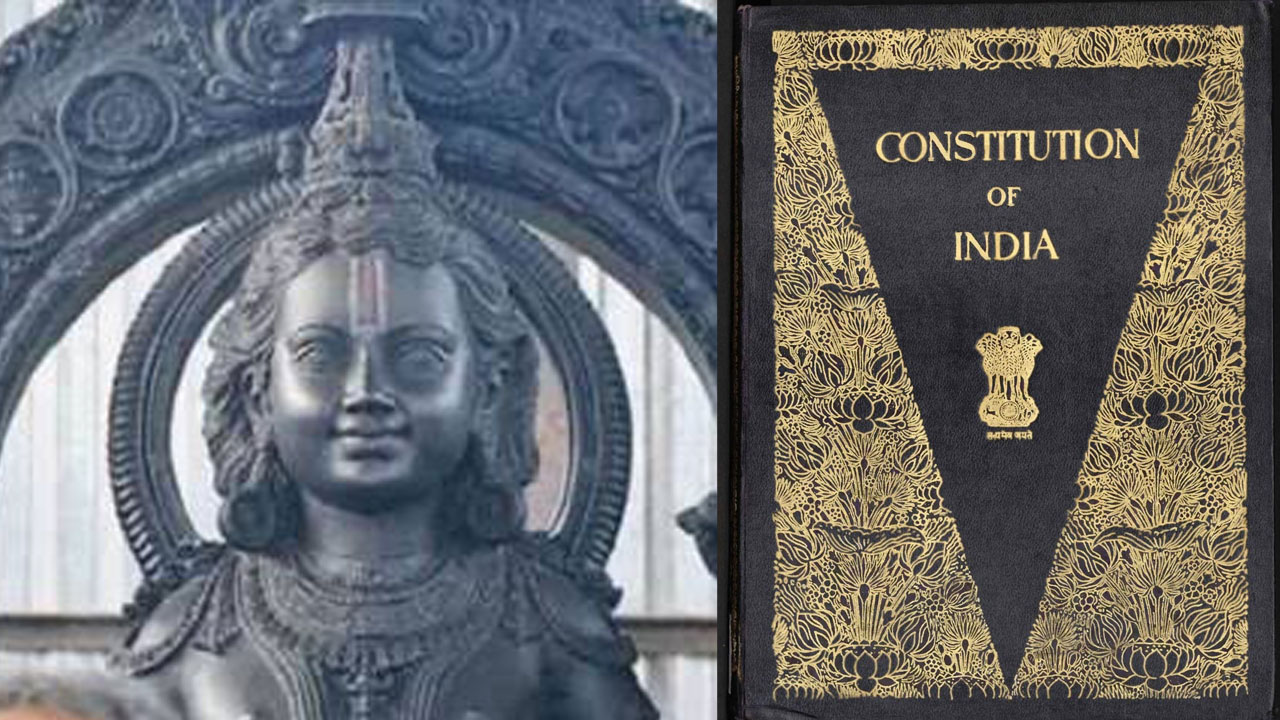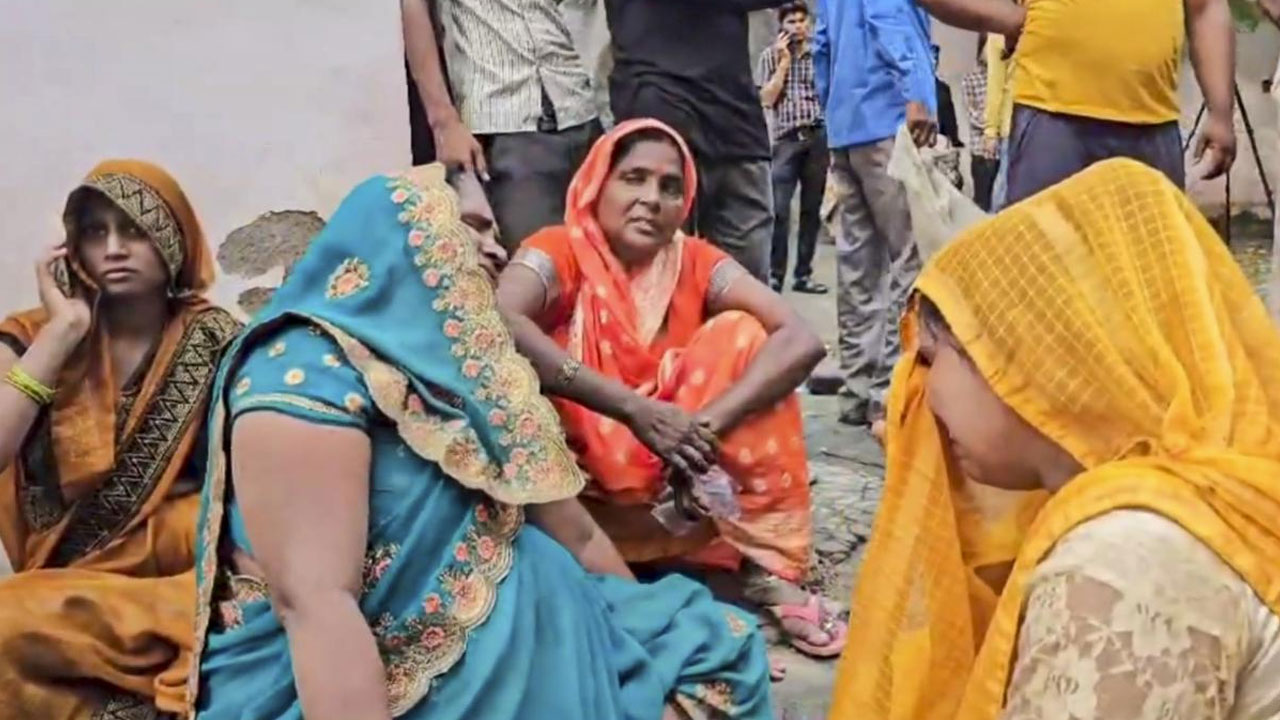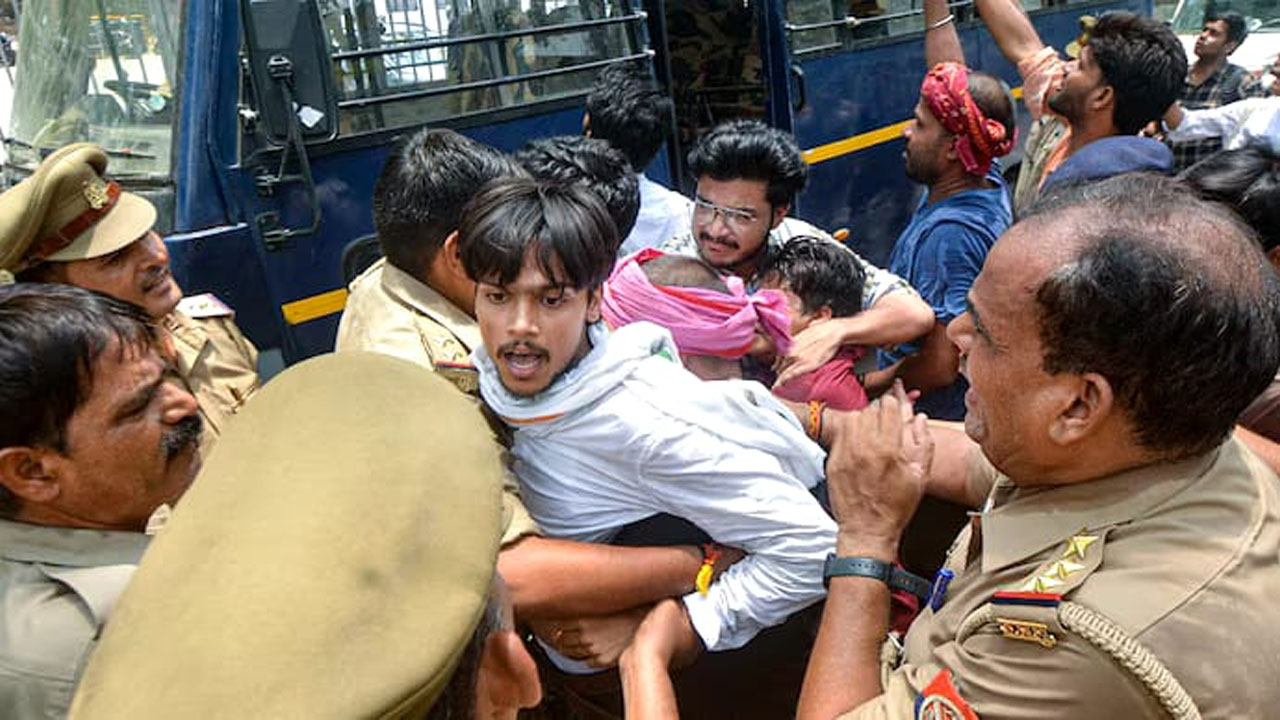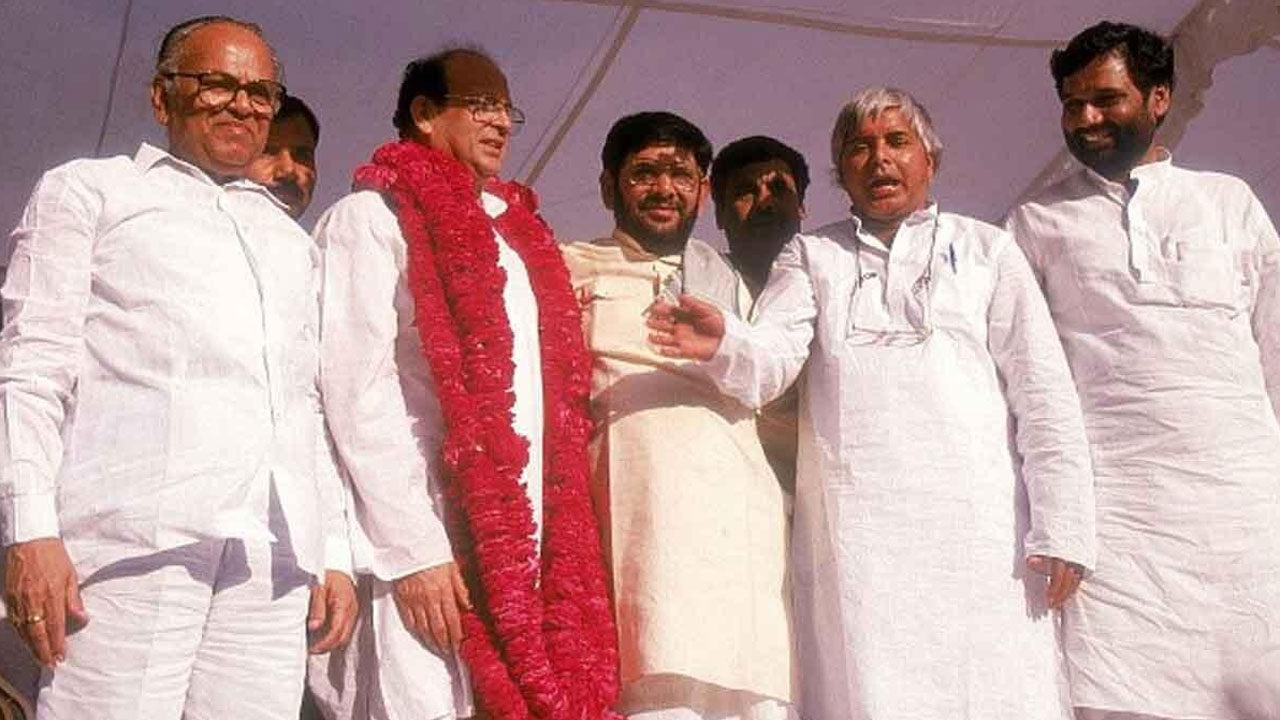“Pran-Pratistha” was performed in Ayodhya on 22 January 2024. Protests by the Shankaracharyas went in vain. In any case, their views were immaterial. The prime minister had played a key role in all the developments, including the bhoomi pujan and the setting up of the temple trust, following the Supreme Court verdict in favour of the Ram Temple. There was no reason why he should have deprived himself of the opportunity to perform the consecration of the temple. But another question begs an answer. Why was the pran-pratishtha ritual – of “infusing life” into the idol of Ram – performed just four days before the Republic Day (26 January)? What were the RSS-BJP trying to achieve with this timing? We will never get an answer to this question, just as we still don’t know why 6 December (1992) was chosen to raze the Babri Masjid? But what is certain is that both the choices were deliberate.
We all know that 6 December is the death anniversary of Ambedkar, the maker of the Indian Constitution, and 26 January is the day on which it was enforced. Pulling down the Babri Masjid on 6 December was designed to show contempt for the Constitution and performing the pran-pratishtha and harping on Ram’s rule just four days before the Republic Day was aimed at putting a question mark on the Constitution.
On the Prime Minister’s call, Hindus all over the country celebrated Diwali on 22 January. They burst firecrackers and their colourful fireworks rent the sky. Markets, buildings, road intersections, streets, lanes, homes – everything was illuminated. Special puja pandals were set up in the localities of Dalit and backward castes. Bhajan kirtans (recitals) were organized in temples. The administration even arranged special pujas in prisons. The devotees of Ram took out processions. In Uttar Pradesh, Hindu officers, especially the District Magistrates and Superintendents of Police, visited temples and performed pujas in their respective districts. There were bhandaras (communal feasts) and distribution of prasad. Saffron flags emblazoned with images of Ram were fluttering on rooftops of Hindu homes.
All this did not happen suddenly or spontaneously. And this had nothing to do with devotion for Ram. It was just a government-sponsored demonstration of devotion for Prime Minister Narendra Modi. The government had officially called for lighting earthen lamps and illuminating buildings. The district administrations and the Rashtriya Swayamsevak Sangh-Bharatiya Janata Party (RSS-BJP) machinery ensured that the celebrations were grand. The Uttar Pradesh government had even allocated a special budget for the purpose.
This sponsored Diwali was a pre-poll test to verify that there has been no dip in the graph of devotion for Modi. And the mega turnout at Ayodhya and grand celebrations in the Hindi belt must have pleased Modi and the RSS to no end. In the euphoria over the Ram festival, they see the success of the politics of Hindutva. No wonder, RSS chief Mohan Bhagwat remarked: “Ramlala has brought India’s self back … A new India has risen from the temple … Ramrajya is on its way.” The RSS was formed in 1925 with the objective of building a Hindu Rashtra. Today, in 2024, it can draw satisfaction from the fact that its 100-year-long hard work is finally bearing fruit. No doubt, the Constitution is a stumbling block on the path to Hindu Rashtra, but a step in the direction of removing it has been taken by infusing the Hindu mind with the idea of Ram Rajya. Also, the Prime Minister describing Ram as the “Law of India” was not spontaneous. What did he mean to say?
The Prime Minister’s speech was carried prominently by all newspapers on 23 January. The Indian Express published it in the form of an article. In his speech, the Prime Minister said, “This temple is not just a temple to a god. This is a temple of India’s vision, India’s philosophy, India’s direction,” he said. The Prime Minister also said, “We have to expand our consciousness from Dev to Desh, from Ram to Rashtra”. Modi predicted that the “Ram Temple would change the discourse in the country. That discourse will be centred on the basic values of Ram Raya … Ram is the faith of India … Ram is the foundation of India, Ram is the idea of India, Ram is the law of India.” He also said, “At this sacred place, we will have to lay the foundations of India for the next 1000 years.” If this is not a call for making India a Hindu Rashtra based on Hindu laws, then what is?

Then, can we say that the advent of Hindi Rashtra in India was celebrated on 22 January? Should we treat this date as the day of “pran-pratistha” of Hindu Rashtra in the history of democracy? In other words, did 22 January mark the beginning of the end of democracy in India? Some pilgrims in Ayodhya were asked by TV anchors whether they felt that the “Treta Yug” was back. And the pilgrims said “yes”. Is hailing the Treta Yug part of a political campaign? Can Treta Yug be brought back? Can the RSS-BJP turn the clock back?
That may not be possible, but the way Indian democracy is being turned into an autocracy starting about a decade ago bodes ill not only for shared living but also for India as a nation. The BJP has virtually made Hindutva India’s State religion and given rise to majoritarian nationalism in a democracy, stifled cultural diversity and has made the minorities feel hated and intimidated. Hatred for the minorities is in the air because it rules the hearts of the leaders of the BJP and the Sangh Parivar. A recent incident would suffice to underscore the point. On 23 January, a day after the pran-pratishtha in Ayodhya, 15 Muslim homes were bulldozed in Mumbai’s Hyder Chowk. Maharashtra Deputy Chief Minister Devendra Fadnavis revealed with great pride that “some Muslims had stopped and attacked a group of Hindu bike riders as they were going round the city raising slogans of ‘Jai Shri Ram’. Hence, we have got the homes of those Muslims razed.” Is this what is meant by Ram Rajya? And what would be the status of the Constitution in Ram Rajya? In BJP-ruled states, not only the homes of the Muslims, but the Constitution is also being bulldozed.
It is often said that RSS-BJP supporters form no more than 30-40 per cent of the population and that the remaining 60-70 per cent have faith in democracy and the Constitution and believe in co-existence and secularism. Even if this is taken as a gospel truth, we must not forget that the 30-40 per cent are blind devotees, who can do anything and everything at the instance of their leader. The people who can celebrate Diwali on one call of their leader, can very well carry out massacres on another call. Modern India has witnessed many mass killings executed by mobs of blind devotees. It was not without reason that Modi had told Parliament that “One Modi is more than a match for everyone else.” A terrified intelligentsia and a senseless society haven’t emerged out of thin air.
Can Ram Rajya be an alternative to democratic India? Is Ram Rajya – which Prime Minister Modi wants to make the foundation for a new India – compatible with peaceful co-existence and diversity? India has never experienced Ram Rajya. It is a mythical concept. The Valmiki Ramyana gives us two instances of what comprised justice in this mythical rule. A dog reaches the court of Ram with the complaint that a Brahmin has hit him with a stick. Ram asks the dog, “What punishment should I give to your tormentor?” The dog replies that in his previous birth, he was a wicked priest of a mutt and that was why he was reborn as a dog. The punishment he seeks for the Brahmin is that the latter should also be made the priest of a mutt. Ram accepts his plea. In another case, a Brahmin carrying the dead body of his son approaches the king. He demands justice. “What has caused his untimely death?” the Brahmin seeks to know. Enquiries are made and it is discovered that the Brahmin boy has met with an untimely death because a Shudra was performing penance on the banks of a river. Ram immediately goes to the spot and kills the Shudra. And the son of the Brahmin returns to life. If we take Sita’s exile also as a guiding principle of the justice system under Ram Rajya, we can very well say that keeping the Shudras and the women under the thumb is the essence of Ram Rajya. Can such values form the core of the justice system of a modern state? Can these values form the foundation of new India? Can such a Ram Rajya be an alternative to Indian democracy?
Let us dismiss Ram killing a Shudra and exiling his wife as acts of a mythical Ram. Let us talk about Modi’s Ram, who, he says, is the law of India. Will this Ram shun the politics of Hindutva and Hindu nationalism? Will he stop being anti-minorities? Will he embrace secularism and the principle of peaceful co-existence? No BJP leader can answer these questions in the affirmative. Then, how can the rule of that Ram be better than the rule of the Constitution which we had adopted on 26 January 1950? The leaders of the BJP and the Sangh Parivar have been openly talking of replacing the Constitution. They have been openly calling for mass killings of Muslims. They have attacked churches. They have burnt a missionary alive. After all this and more, can we still hope that they would be a votary for peaceful co-existence? Had they believed in peaceful co-existence, would they have raked up the issue of the mosques at Kashi and Mathura after the settlement of the Ayodhya issue? A political drama is being played around Kashi and Mathura. With power in their hands, the RSS-BJP are bound to succeed once again. Won’t they pull down the Kashi-Mathura mosques just as they had pulled down the Babri Masjid? Just as they celebrated Ram to polarize Hindus ahead of the 2024 general election, won’t they celebrate Shiva in Kashi or Krishna in Mathura to win the 2029 elections? And then, like Ram, won’t they describe Shiva and Krishna as the law of India? Will mythical characters and gods now run our country? It should be clearly understood that Ram Rajya or the rule of any other god is just another name for Hindu Raj.
Cowering intelligentsia, senseless society, sold-out media and State power have helped the RSS-BJP bring about Hindu Rajya. Ambedkar had warned about this possibility before independence. “If Hindu Raj does become a fact, it will, no doubt, be the greatest calamity for this country. No matter what the Hindus say, Hinduism is a menace to liberty, equality and fraternity. On that account it is incompatible with democracy. Hindu Raj must be prevented at any cost,” he had prophesized.
BJP leaders may well talk of “Sabka Saath, Sabka Vikas”, but the truth is that “Sabka Vikas” is not at all on the Hindutva agenda. Ambedkar had said, “The reason why the philosophy of Hinduism does not answer the test either of utility or of justice is because the religious ideal of Hinduism for divine governance of human society is an ideal which falls into a separate class by itself. It is an ideal in which the individual is not the centre. The centre of the ideal is neither individual nor society. It is a class – the class of Supermen called Brahmins.”
But the warning that Ambedkar had voiced in the Constituent Assembly on 24 November 1949 went unheeded. He had said, “On the 26th of January 1950, we are going to enter into a life of contradictions. In politics we will have equality and in social and economic life we will have inequality … We must remove this contradiction at the earliest possible moment or else those who suffer from inequality will blow up the structure of political democracy which this Assembly has so laboriously built up.” But that contradiction continues to persist even 70 years later. And its victims are not conscious of it at all.
(Translated from the original Hindi by Amrish Herdenia)
Forward Press also publishes books on Bahujan issues. Forward Press Books sheds light on the widespread problems as well as the finer aspects of Bahujan (Dalit, OBC, Adivasi, Nomadic, Pasmanda) society, culture, literature and politics. Contact us for a list of FP Books’ titles and to order. Mobile: +917827427311, Email: info@forwardmagazine.in)





